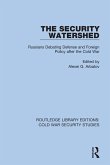This book examines the drivers behind great power security competition in space to determine whether realistic strategic alternatives exist to further militarization.
Space is an area of increasing economic and military competition. This book offers an analysis of actions and events indicative of a growing security dilemma in space, which is generating an intensifying arms race between the US, China, and Russia. It explores the dynamics behind a potential future war in space and investigates methods of preventing an arms race from an international relations theory and military-strategy standpoint. The book is divided into three parts: the first section offers a broad discussion of the applicability of international relations theory to current conditions in space; the second is a direct application of theory to the space environment to determine whether competition or cooperation is the optimal strategic choice; the third section focuses on testing the hypotheses against reality, by analyzing novel alternatives to three major categories of space systems. The volume concludes with a study of the practical limitations of applying a strategy centered on commercialization as a method of defusing the orbital security dilemma.
This book will be of interest to students of space power, strategic studies, and international relations.
Space is an area of increasing economic and military competition. This book offers an analysis of actions and events indicative of a growing security dilemma in space, which is generating an intensifying arms race between the US, China, and Russia. It explores the dynamics behind a potential future war in space and investigates methods of preventing an arms race from an international relations theory and military-strategy standpoint. The book is divided into three parts: the first section offers a broad discussion of the applicability of international relations theory to current conditions in space; the second is a direct application of theory to the space environment to determine whether competition or cooperation is the optimal strategic choice; the third section focuses on testing the hypotheses against reality, by analyzing novel alternatives to three major categories of space systems. The volume concludes with a study of the practical limitations of applying a strategy centered on commercialization as a method of defusing the orbital security dilemma.
This book will be of interest to students of space power, strategic studies, and international relations.








